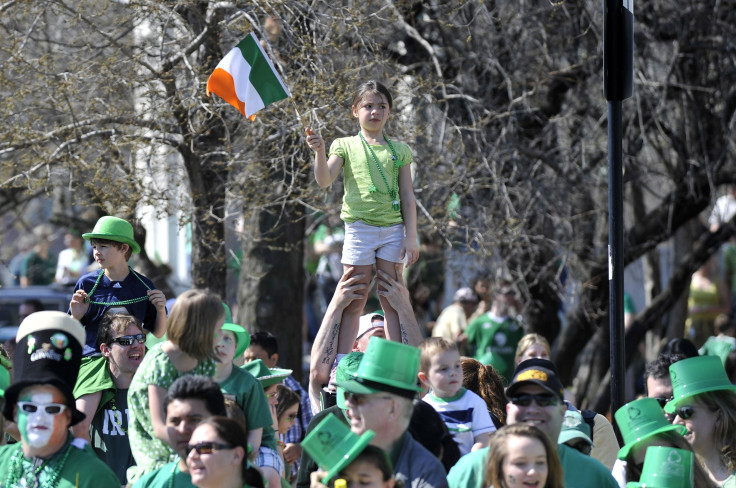St. Patrick's Day: Facts, History And Traditions For The Irish Holiday

Millions of people around the world, whether Irish, Irish-descended or otherwise, will deck themselves in green and partake in some serious drinking Friday. Many, though, will not know quite why they are engaging in the annual ritual of observing St. Patrick’s Day.
Here are a few facts so you can be a little wiser during all the revelry:
St. Patrick Was Actually Born In Britain
St. Patrick, whose death is marked every year on March 17, is the patron saint of Ireland and one of Christianity’s most famous figures. Facts about his life are scarce, though. It is fairly well established that he was born in Britain toward the end of the fourth century before being kidnapped by Irish raiders and taken to Ireland at the age of 16. During his six years as a prisoner, he is believed to have discovered Christianity and heard the voice of God telling him to make his escape.
Read: Best Cities To Celebrate St. Patrick's Day 2017: Top 10 Places For Events, Cost And Weather
Yet soon after making his way to Britain, a second revelation informed him to return to Ireland as a missionary. After years of study, he headed back, where it is believed he baptized thousands of Irish people often using, according to some accounts, a shamrock to explain the Holy Trinity.
No, He Didn’t Banish Snakes From Ireland
Perhaps the most famous legend surrounding St. Patrick is that he is the reason for Ireland having no snakes, having banished them from the country by chasing them into the sea. However, all evidence suggests that there never were any snakes in Ireland.
Even without that legend, St. Patrick’s date of death became an official feast day in the Catholic Church in 1631. In Ireland, families would mark the day by going to church in the morning and then breaking the sacrifices of Lent during the afternoon by eating Irish bacon and cabbage.
The First Parade Was In New York City
If you’re ever wondering why the celebrations for St. Patrick’s Day often seem bigger in the United States than in Ireland itself, there's a good reason for that. Indeed, the celebration as we know it today -- all green, parades and revelry -- is actually an American phenomenon.
Read: St. Patrick’s Day Playlist 2017: 17 Irish-Themed Songs To Celebrate The Holiday
While in Ireland the day remained primarily a religious observance into the 20th century, the very first St. Patrick’s Day parade anywhere in the world was held in New York City in 1766, instigated by Irish Catholic members of the British Army.
After a new wave of Irish immigration caused by the Great Potato Famine in the 19th century, the celebration grew in importance and spread to other major cities across the U.S. Meanwhile, the traditional bacon and cabbage was replaced by the cheaper alternative of corned beef and cabbage.
© Copyright IBTimes 2024. All rights reserved.





















